Almost a year with the Leica Monochrom by Allen Bourgeois
Hi Steve,
I have had my Leica M Monochrom for almost a year now and my 35 Summilux FLE for a little over a year. There are plenty of others that have gotten into the technical aspects of this camera and that has been compared and debated a lot in other reviews. I wanted to give a personal view of this camera and lens and how it works for me and the way I see. I also want to avoid the film vs digital debate in this because I love both. I feel that they are different and that’s a good thing.
Here are some thoughts on both the camera and the lens after some real-time with them both.
For me and the way I see and work, especially concerning my personal work, this has been a very good match. I had noticed before I pulled the trigger on the MM that a lot of my personal work was ending up as black and white final prints. It just seems to be the way I was and still am seeing. So when Leica announced the M Mononchrom I went on the waiting list.
When the camera first arrived and I put the 35 Summilux FLE on the camera it just felt right. I went through a bit of a learning curve and for me it takes a while for a camera or any equipment to become second nature. And this was no different from any other camera or lens. But it was soon after I really spent some quality time with this camera and lens that I found how well it worked with the way I work and see. I have read others say that this camera just gets out-of-the-way and I would say that is true for me. It has taken some time for this camera to become a real extension of my vision but it has and it has in a way that few other cameras have in the past. It’s a tool and a wonderful tool if you are like me and tend to see in black and white.
The fact that I can now shoot at 1600 and 3200 ISO is a great plus if you work on the streets the way I work. To be able to shoot at f/8 and f/11 and have shutter speeds of 1/500 of a second and faster is a great tool to have for fast paced street work. The lens has very good depth of field scales and makes it easy to hyper focus. I also find manual focus to be really good with this camera lens combo The files are amazing to work on and in my opinion you really do need to use some kind of post processing to get the best out of the files but also in my opinion that could be said for most digital files. I also prefer CS6 over Light Room and/or Silver Efex. Thats just personal preference.
There is no perfect camera that is going to be right for everyone. The one size fits all is not what this camera is about. It is a specific tool. I prefer manual focus, manual exposure, black and white and no frames per second. So for me and my personal work this camera has been a good fit for the way I see and work. It simple, uncomplicated operation, does just get out-of-the-way.
OK enough words already. Heres some work from the past year. I hope that you enjoy it. I did post some street work in D.I. #405 on April 16th, 2013.
Thanks Steve,
Allen Bourgeois

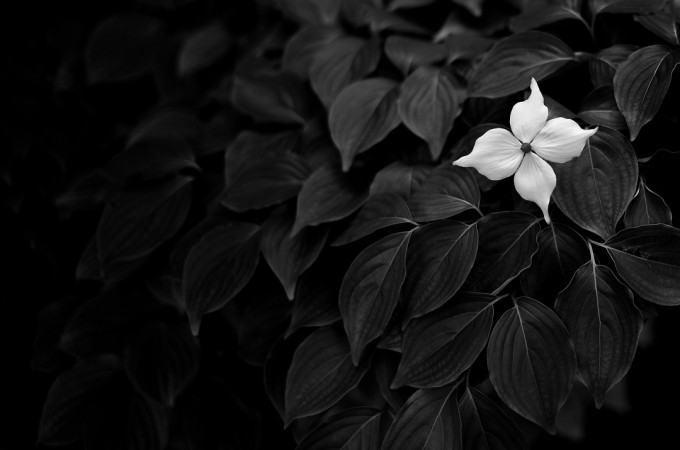
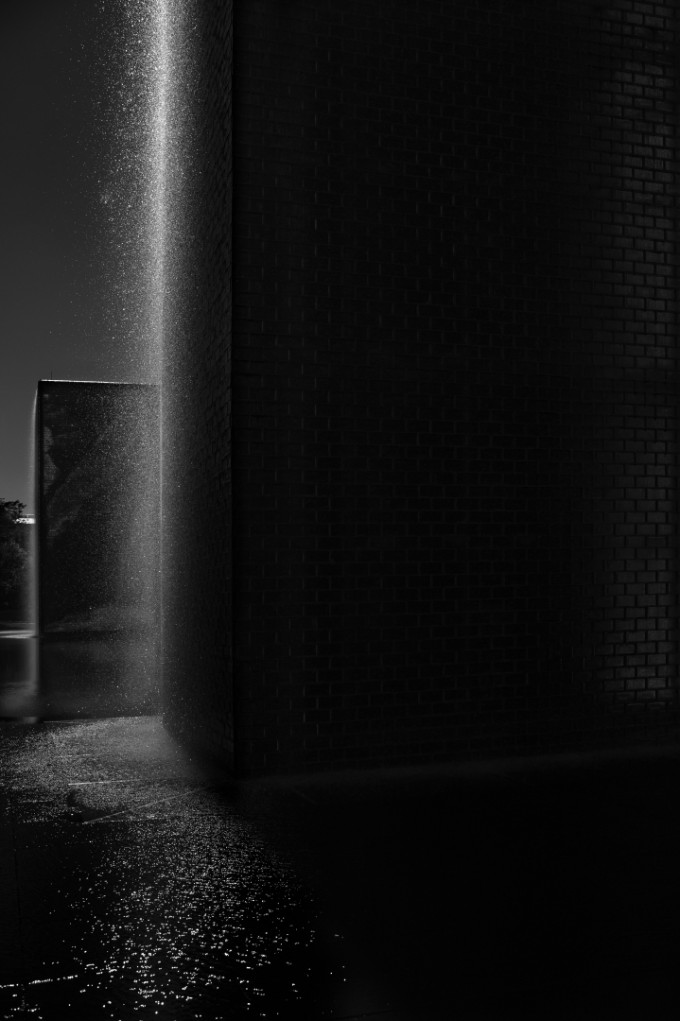
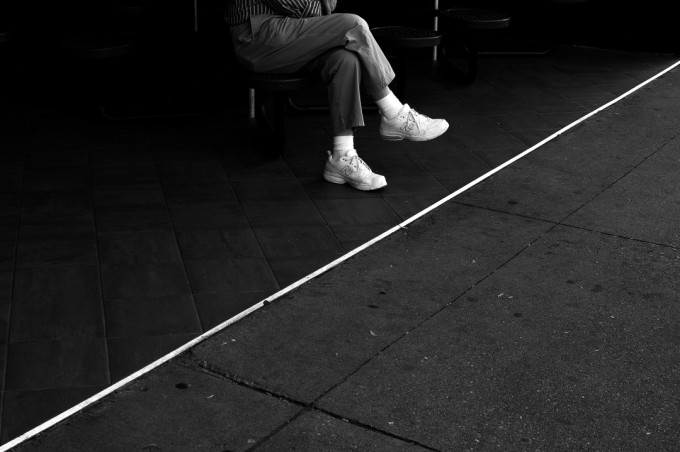
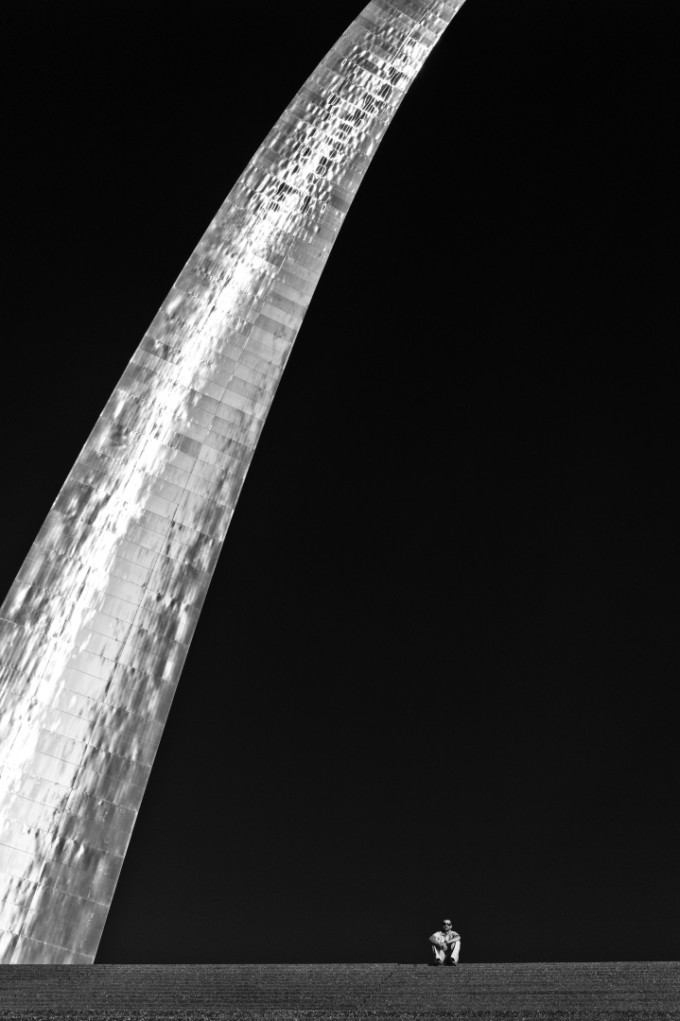
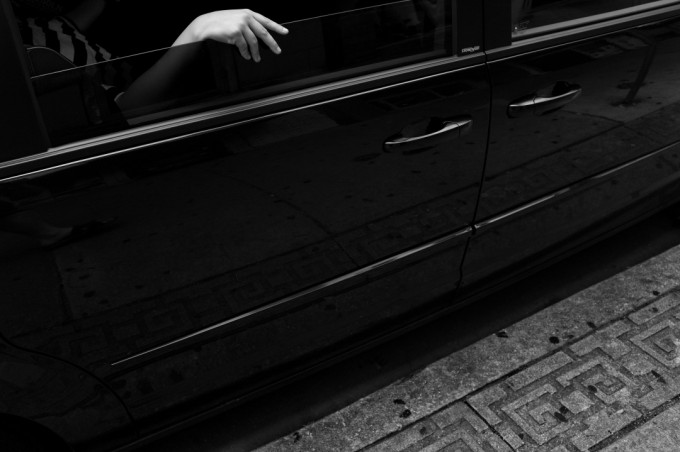
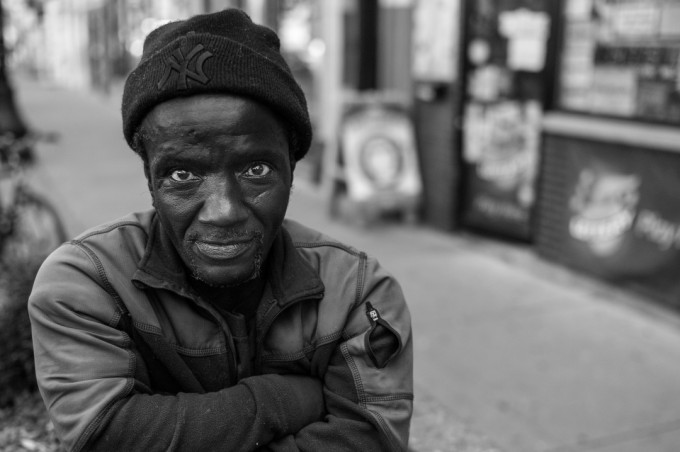
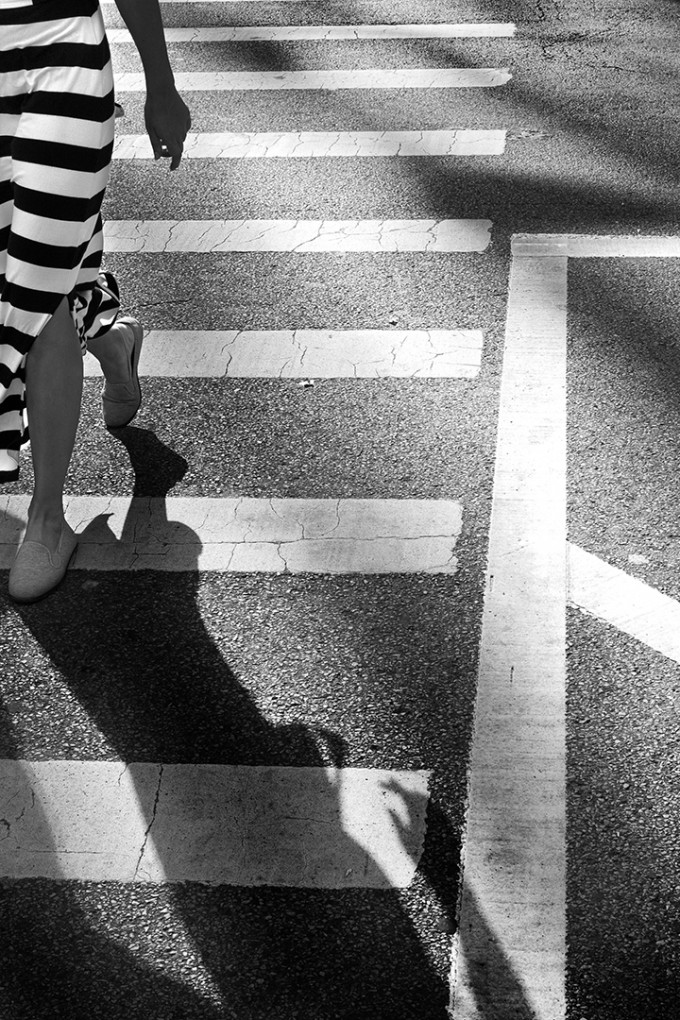


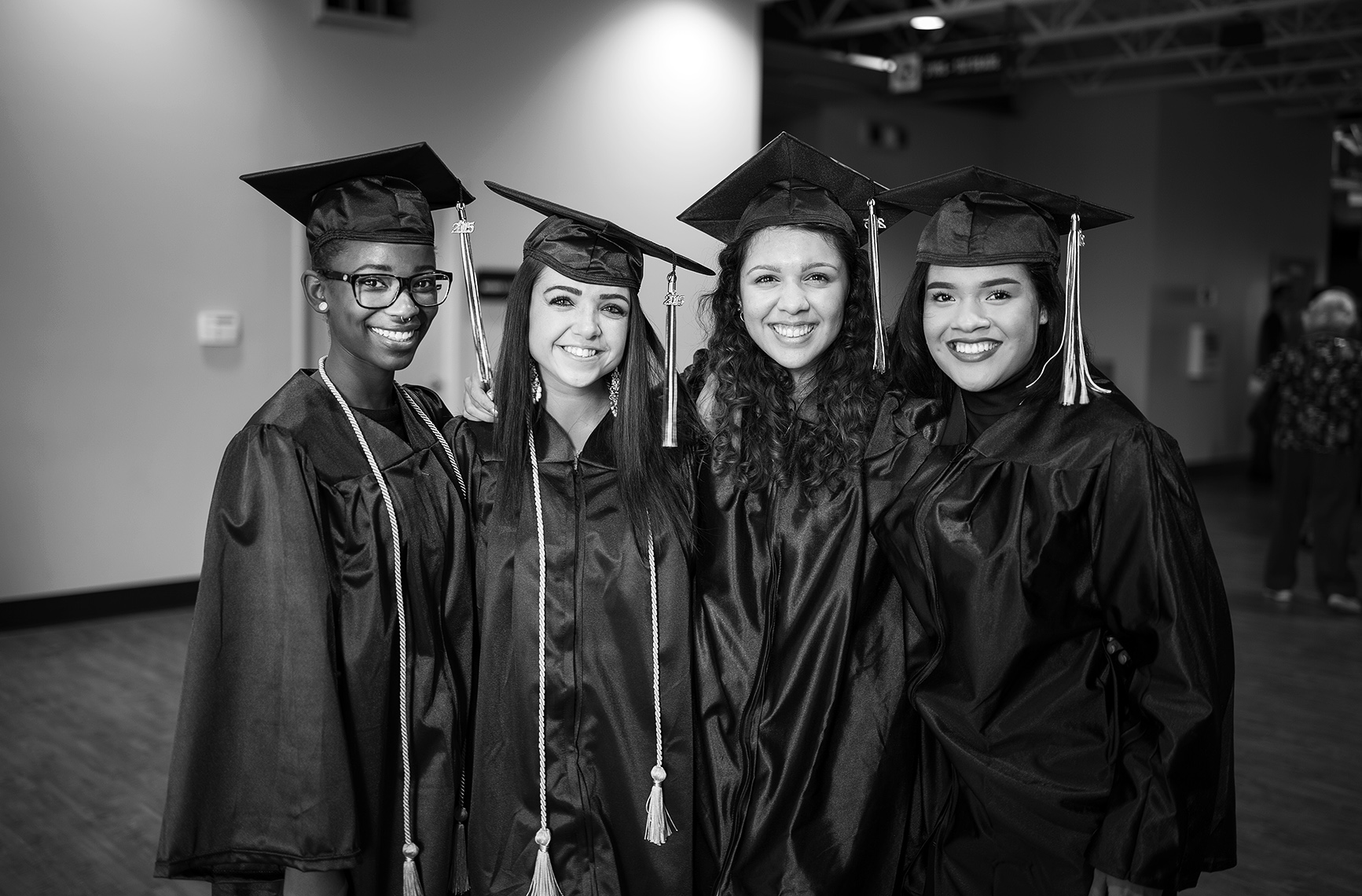
Love the look of the photos. Great composition and feel.
Thanks Christine.
This is the most beautiful collection of MM images I’ve seen.
M Mil is correct as is Allen. I’ve see this portrait in print….it is not weak and does not match this set. It is captivating. I’ve had the opportunity to be involved with a photo group which Allen is also involved in. His work is stellar. The trouble with viewing images on screen is that you do not have the chance to truly experience them. I have……..and this guy is someone to watch.
THANKS STEVE and a big thank you to everyone that took the time to look and to comment,
Here’s the link to the article: http://www.dpmag.com/how-to/shooting/go-deep.html
Hi Arthur,
Yeah I do use filters from time to time and thank you so much for the compliment. Good catch on the red filter on the man and the St Louis Arch. I also used a red filter on the image of the Crown Fountain, Chicago (#2) also.
Thanks for taking the time to look and to comment.
Allen
This is probably the best and most inspiring D.I. I’ve seen on Steve’s page!
Truely just wonderful works of art! I was wondering: What is your take on color filters for the MM?
Do you use them? Or do you just shoot without? The man on the stairs does very much look like shot with a red filter (e.g. if the sky was blue as I expect!)!
Your work really has a lot of the classical photography techniques in it to my eye, meaning very theoretical! That’s something I personally love! Very Bresson-like! 😉
Keep it going, keep them coming, I’d love to see more!
Cheers from Austria!
Arthur
Thank you Dez and Fa. Brice
Very nice images!
THAT IS a true B&W eye!! Congrats bro’!!
Contrast, opposition between illuminate and dark parts, graphical, well done!
Thanks Brian…
Email me and let me know what size print you would like.
abphoto7@comcast.net
Beautiful images and composition, but horrible digital-look to the greyscales.
Alan, I like your style.
Allen, I’d love to purchase a print of image #2. Wonderful. How to purchase?
off course only a bourgeoisie can have a leica..
Thanks you Don and Ibraar
Excellent tones and compositions man. Superb
Allen,
Thanks for elaborating. After reviewing hundreds of MM images over the last few weeks trying to find a direction for my recent B&W attempts it’s evident that these files are very adaptable to style and vision. I very much resonate with your’s. The leap to either the M or MM is a significant financial commitment to someone that is starting a Leica kit from scratch. I’m in a 10 year hiatus from a previous 25 years of shooting with the M system, but that’s all gone now.I’m tantalized by the M as a tool for my general photography, but I’m enamored with what I see the MM can do for files. Now the only thing left is the “vision”, do you have that bottled?
Thanks for sharing all these excellent images. Do you have any exhibitions coming up? I missed the Calumet exhibit.
Roger
Even with normal web-posted images it seems obvious that there is really something special about the Monochrom. Your post-processing decisions are also really appealing to me. I especially like no.3 and the last one – I find those sort of abstracts really stimulating. Thank you!
Thanks so much Larry. I was just saying I don’t think there are any formulas and what is right for me is just that. Sorry for any confusion.
Allen, you missed my main point and the one that complimented your photographs. Black and white photography requires . . . well, ample black and white (and mid tone greys) in the image, negative, or photo to create a good black and white image. This is what impressed me about your personal choices and which seem to me are what the MM is designed for. After writing that I looked at Steve McCurry’s photo blog and recent photographs. There may be no better photographer working today who takes such advantage of color. When I looked at the first 10 or so images on his web site there were hardly any, as in zero, that actually had a pure white “color” in it, or even black. Greens, reds, blues, browns all in great harmony, but no pure white or black. If you transformed some of them to black and white images they would be a disaster. He obviously looks for and shoots beautiful colors. Your strength, in my opinion, is finding great juxtapositions of white and black in an image and then capturing them with the MM. Stated more simply, great b&w images require great b&w in the reality being captured. You have found great examples of those and captured them quite well with the MM.
Thanks but it’s the Crown Fountain in Millennium Park, Chicago.
LoL yeah it would be interesting.
Can you imagine the faboy’s heads all collectively exploding at once if Canon/Nikon ever did something like making a monochrome camera?
I’ll have to read that… Thanks for the heads up and the comments.
Thanks everyone and to Hal it’s the Saint Louis Arch at sunrise and somebody was sitting in the perfect position in relationship to me and the camera.
To Larry Kincaid, there is no right or wrong way to see or any required way to see. Only what’s right each individual. The way I work is a result of the way I see and that drives what equipment I use. That’s what works for me. If that doesn’t work for anyone else that’s alright. Great to have these kinds of choices and I applaud Leica for making a camera like this. Maybe other makers will follow and get off the one size fits all merry go round. If they do we all win.
The article should be in the next issue.
Absolutely beautiful work!
Hi Allen, great images. Maybe with the portrait you can sense the distance because of the body language i. e. crossed arms. I still can’t figure out on No. 4 where the tusker shape comes from on the left of the picture. Maybe you can explain a bit on it.
Cheers
Michael
Would love to read the article, J Dennis Thomas. Do you a link to the article?
Regards,
Jorge
woooow !!! the 2. picture with rain is something beautiful !!! Great ! I like it very MUCH 🙂
These are really artsy pictures. Did not see this for a very long time!!! Bravo!!
i’ve only seriously shot with an iphone and a motorola atrix. both are very challenging mobile devices to get great shots in with low light using the best apps. i’ve picked up a couple cannon dslr’s and just…no one can believe what i can do with “real” cameras because my training is almost solely on mobile, and when you come from that world it’s so much more difficult than having one of these “manual” cameras that basically do it all for you…i just can’t imagine how easy it is to shoot with a leica day in and day out. i imagine you literally have to try to take a bad picture or just have no talent at all. i can’t wait until i can afford one, or mobile tech catches up and finally wipes leica off the map…yeah, that’s the option i’m holding out for. i can’t wait until my iphone can capture rain drops poeticially falling in monochrome as well as a leica without having to post process…i imagine we’re not too far.
Thanks you everyone for taking the time to look and comment….
Not gonna comment on IQ which I feel is not the key essence of BW (that’s me), but kudos to you to sticking to the fundamentals… great CONTRASTs 🙂
Wow – beautiful images!
EXCELLENT!!!!
Funny you bring that up. I just finished writing an article for Digital Photo Magazine about the overuse of shallow DoF in photography these days. I’m glad there are other photographers that recognize the need for deep focus sometimes.
What more can I say, other than I likewise adored your images – rich, sumptuous, velvety and beautifully captured. For the time being though, I will continue to strive for this with my Leica M9 and Hasselblads in combination. Stunning.
Beautiful images. B&W required, of course. So, compelling that they actually take attention away from the camera. But wait. That’s the way it’s supposed to be. A camera that gets out of the way but gets you what you want. I’m another case of someone who ends up converting color images to black and white anyway, but who wonders whether or not he can do the required “seeing in black and white.” Well, after selling all the equipment I was no long using, including a few Leica lenses and M6 (ouch!), I managed to get a MM with the idea of giving it a trial. One trial (outing) and I was convinced. Came back with a couple of so-called keepers right away. Second trial on Sunday led to images that my grown kids wanted copies of. Wide range of shots from people, to architecture, to sculpture to flowers, all with a second test of my 50mm rigid cron. Five printable shots, printed. And immense learning in just 2 outings. First, you don’t really have to “see in black and white.” That’s misstated. You need to photograph blacks and whites, a shades of grey in between. Sounds silly, but you discover this when you look at a color image to convert and very obviously with a MM raw image. Think about a site that has a range of colors but no good white point or black point, say lots of reds and greens and browns (these exist in the real world). Now go look at all the images posted by Allen above. Someone already remarked about the great use of blacks and whites. So, he looks for them in the world until he finds them and shoots. He doesn’t go color blind and see in B&W. You can also look for them among your color images. Moreover, when you process the rather ugly muddy raw images in photo shop you also desperately need those white and black spots to set the same way you would do in color to get the color white balance correct. Once set in the MM the black point and all shades of grey “snap” into place ready for further adjustment. So, to use the MM you have to be willing and able to make use of photoshop to finish them to your liking. But as above, you really have to do that with color as well to go beyond web snapshot photography. So, it’s a beautiful machine for doing this and there are lot’s of b&w “scenes” out there waiting to be discovered or created with this camera. In short ask your wife/model to wear black and white, shades of grey and/or colors that convert well to b&w. Why not? Thanks for sharing. Your images will increase my own ability to look for (not see) great b&w images to make. A shame this camera is not less expensive.
Love ## 2 & 4 but they’re all great – thank you!
Bob thanks yo uso much. I love the Andrew Smith gallery there.
Congrats on the M240. A real good friend has one and it’s a great camera.
Hi Allen.
All I can say is WOW!! Beautiful dense blacks and stunning whites. I spend a ton of time in the galleries of Santa Fe and what always strikes me with the B&W images by the masters is how beautiful the blacks are, and how gorgeous the whites are; and everything else just falls in between perfectly. Your work reminds me of the greats.
I am really impressed and echo all the other positive comments. Composition is fantastic, as well.
Congrats,
Bob (AKA ‘another guy who sold all his Hassy gear and is anxiously waiting for his M240’)
Good Work. I hope you will enjoy the camera and lens for many more years.
Thanks everyone. You are to kind and I am humbled by your kind words.
Allen
Beautiful, evocative images. I love the contrast.
Really nice set Alan. Love the compositions and I agree with you….love the camera!
The portrait is not weak but doesn’t really match this set.
Alan, your photos are probably one of the best sets ever posted on Steve’s site. Thanks for sharing.
Thanks you all for looking and taking the time to comment. Steve has a killer site so thanks to Steve also.
I can honetly say that i haven’t felt this way about a camera since I bought my 500 C/Ms in the mid 1980s.
Roger,
Thanks so much for the comments.
First the high ISO allows me to use DoF and fast shutter speeds for my street work and being hyper focused is just so fast. It does take a little practice but I find my ability to capture images as soon as I see the elements come together a real plus for the way I work.
I am a photographer that believes in prints to. I am an old B&W darkroom rat. (LoL)
I think the files from the MM just have so much there in them. I also feel more control and more comfortable working in CS6. And for me it’s just a preference. I ahve seen some amazing images using the other tools. CS6 is a lot like the way I worked in the darkroom and I would say its the entire enchilada. It starts with the vision and then finding the right camera, which for me this is then properly captured file, the PP and finally the print. Thanks again for your comments and questions and I hope that I fully answered them.
My favourite D.I. so far.
There is a touch of Trent Parke about the second image; but the real winners for me are the third and fourth. Excellent.
One more comment. It’s so refreshing to see judicious use of depth of field so that not all the images have that “mandatory” bokeh just because you own a fast lens. So many Leica users seem fixated on blurred backgrounds for all their images often negating powerful visual narrative and weakening compositions. You make a great example of breaking that “mania” for the better of the image.
Magical exceptional images. Love the tonality you are achieving with the MM, the compositions and, most important, the powerful content of your work.
very nice work.
You really do mean ‘Black and white’ in what you show to us. I really do mean fantastic when I say so
🙂 These are fantastic!
As said above, I love the first one and the portrait!
Thank you for showing!
Yours
Dirk
Very nice.
What wonderful images! Absolutely stunning shots, that camera seems to be made for you!
Allen,
Is the highISO component of the MM the one feature that plays most to your style and strengths as a street photographer? The results are certainly visually appealing.
I’m imagining these images printed and I think I’d be spending a lot of time in front of the first and the portrait. The render/fading of the highlights creating movement from upper right to left in the flower picture catches me and the portrait makes me want to have some conversation with the subject; the eyes seem tto beg a question. Most make me want to have some other interaction with the subject or setting.
Can you say something about in what way you find CS6 particularly suited to these files – is it about the software, the nature of the monochrome files, both?.
Regards,
Roger
Wow, now this is art!
Bravo! The picture of the arch with the man on the ground makes an interesting composition but what really moved me was the last picture – showing contrasting and reversed stripes of black and white
Love your fabulous abstract images and perfectly processed too.
Very very good. Lovely set of abstract(ish) pictures that use mono really well. Strangely the straight portrait felt the weakest of the bunch maybe because the others are all quite unusual.
Really really great compositions, thank you very much for sharing with us 😉
Very cool. I feel humbled by your image quality.